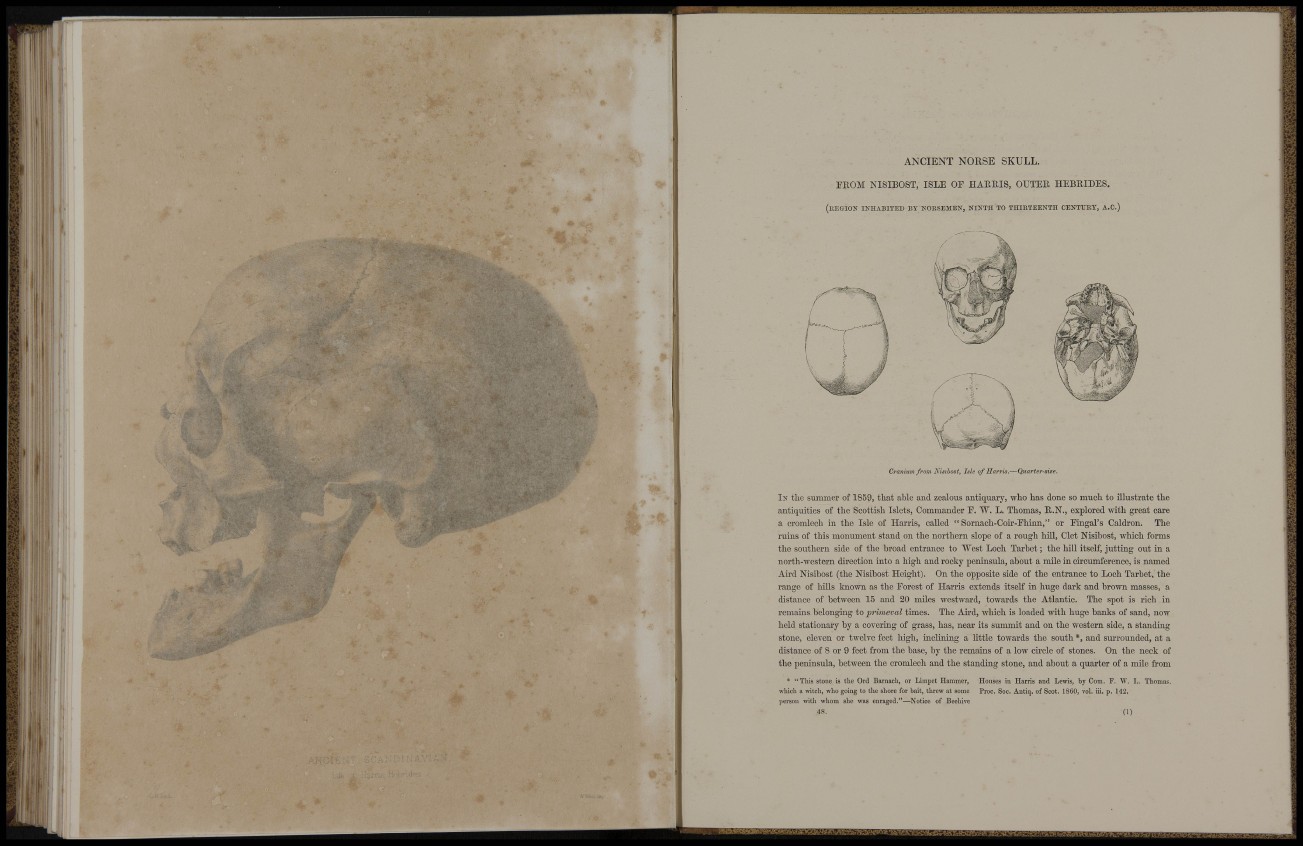
, - H , -
.-V • ..vÄ^j •
Pe-
« • .1
• Ii*'
i."
[
i
. II in
•Iri
« .
A N C I E N T NORSE SKULL.
PROM KISIBOST, ISLE OF HAEEIS, OTJTEll HEBRIDES.
(REGION INHABITED BY ^^OIlSEMEN, NIKTH TO THIRTEENTH CENTURY, A.C.)
Cranium from Nisihost, Isle of Harris.—Quarter-siee.
In tlie summer of 1859, that able and zealous antiquary, who has done so much to illustrate the
antiquities of the Scottish Islets, Commander E. W. L. Thomas, R.N., explored with great care
a cromlech in the Isle of Harris, oaUed " Sornach-CoLr-Ehimi," or ELngal's Caldron. The
ruins of this monument stand on the northern slope of a rough hiU, Clet Nisihost, which forms
the southern side of the broad entrance to West Loch Tarbet; the hill itself, jutting out in a
north-western direction into a high and rocky peninsula, about a müe in circumference, is named
Aird Nisibost (the Nisihost Height). On the opposite side of the entrance to Loch Tarbet, the
range of hüls known as the Eorest of Harris extends itself in huge dark and brown masses, a
distance of between 15 and 20 miles westward, towards the Atlantic. The spot is rich in
remains belonging to primeval times. The Aird, which is loaded with huge banks of sand, now
held stationary by a covering of grass, has, near its summit and on the Western side, a standing
stone, eleven or twelve feet high, inclining a little towards the south *, and surrounded, at a
distance of 8 or 9 feet from the base, by the remains of a low circle of stones. On the neck of
the peninsula, between the cromlech and the standing stone, and about a quarter of a mile from
* "This stone is the Ord Barnach, or Limpet Hammer, Houses in Harris and Lewis, by Com. F. W. L. Thomas,
which a witch, who going to the shore for bait, threw at some Proc. Soc. Antiq. of Scot. 1860, vol. iii. p. 142.
person with whom she was enraged."—Notice of Beehive
48. (1)